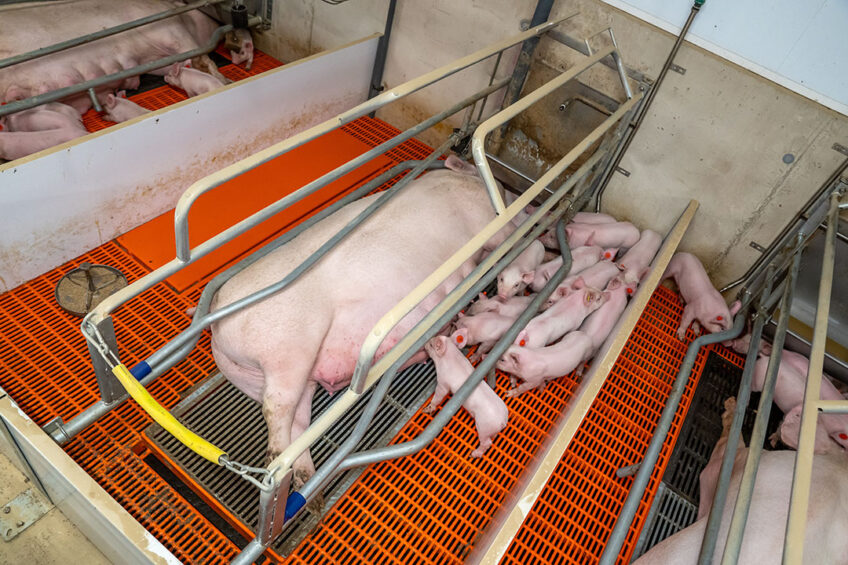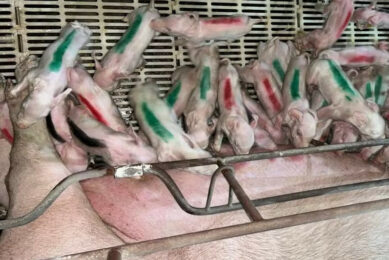How to make sows more prolific?

Sow productivity and swine farm profitability profoundly rely on the management of the breeding female population. It is essential to maximise reproductive potential during sow lifetime to decrease production costs and economic loss in commercial breeding herds.
Ensuring prolific sows
To improve overall sow productivity, it is required to maximise the number of pigs per litter, and to elevate pig birth weight. Farmers also need to increase litters per year, augment lactation yield, and optimise longevity and lifetime productivity. Several factors impact sow productivity and performance. These include genetics, nutrition, environment, management, stress, and breeding. In addition, there are sow-level and herd-level risk factors affecting the overall productivity of the swine herd.
Factors affecting sow and herd productivity
Factors including low or high parity, increased outdoor temperature, decreased lactation feed intake, single insemination, late insemination timing, increased lactation length, prolonged weaning-to-first-mating interval, low birth weight, low pre-weaning growth rate, increased number of stillborn piglets, young or old age at first mating, high within-herd variability in pig flow, limited numbers of farrowing spaces decrease reproductive performance of sows and overall swine herd profitability.
Measuring sow and herd productivity
The number of pigs weaned per sow per year is commonly used as a benchmarking measurement to compare the productivity of breeding herds. However, it is not the best measurement for sow longevity, piglet quality and welfare. Because herds with a high number of pigs weaned per sow per year produce piglets with a low birth weight that are unable to receive enough colostrum from the sow, with higher pre-weaning mortality and poorer post-weaning growth performance. Sow reproductive performance includes both fertility and prolificacy which are affected by farrowing rate, non-productive days, abortion occurrences, ovulation rates, and embryonic survival rates. Lifetime performance of sows is measured with the number of parities at culling or removal, and lifetime piglets born alive, lifetime number of pigs weaned, and lifetime nonproductive days.
Tips to improve sow productivity
Feed cost comprises up to 70-75% of the total production cost of the pig farm; thus, feed management is essential to improve sow and herd productivity. It is important to feed sows a well-balanced diet containing all required nutrients for optimised health, growth, and performance along with adequate drinking water.
Feeding feed bulky laxative feedstuffs
During the later stage of pregnancy, the need for conserving nutrients such as proteins, vitamins, and minerals for ensuing lactation is accelerated. In addition, feed allowance during the last 14 days of gestation affects farrowing progress and lactating performance of sows, and neonatal vitality. It is recommended to feed bulky laxative feedstuffs pre- and post-farrowing. Furthermore, flushing is the method of increased feeding to sows and gilts 7-10 days before breeding to increase ovulation rate and litter size. In addition, reproduction is a major factor affecting sow production efficiency and factors such as gilt growth rate, estrous detection, and optimal time for artificial insemination are critical for an improved reproduction performance.
Proper care during pregnancy and farrowing, keeping sows in a clean, and comfortable farrowing house with dry bedding are required, as well. Moreover, a proper housing system with non-slippery, impervious, well sloped floor type, appropriate ventilation system, sufficient open space for sows, proper shade, and cool drinking water during summer season are important aspects affecting productivity. On-farm health care measures such as piglet deworming are critical elements to reduce poor growth, premature culling, mortality rate, and economic loss. Pregnant sow should be treated for parasite infestation before farrowing, as well.
Concluding remarks
There are sow-level and herd-level risk factors affecting the overall productivity of swine herd. Understanding the factors affecting sow reproductive performance is useful for veterinarians and swine producers to enhance a sow’s potential and to improve the breeding herd productivity. Appropriate feeding and breeding management, proper care during pregnancy and farrowing, suitable housing and ventilation system, monitoring sow health and welfare improve sow productivity and farm profitability.











